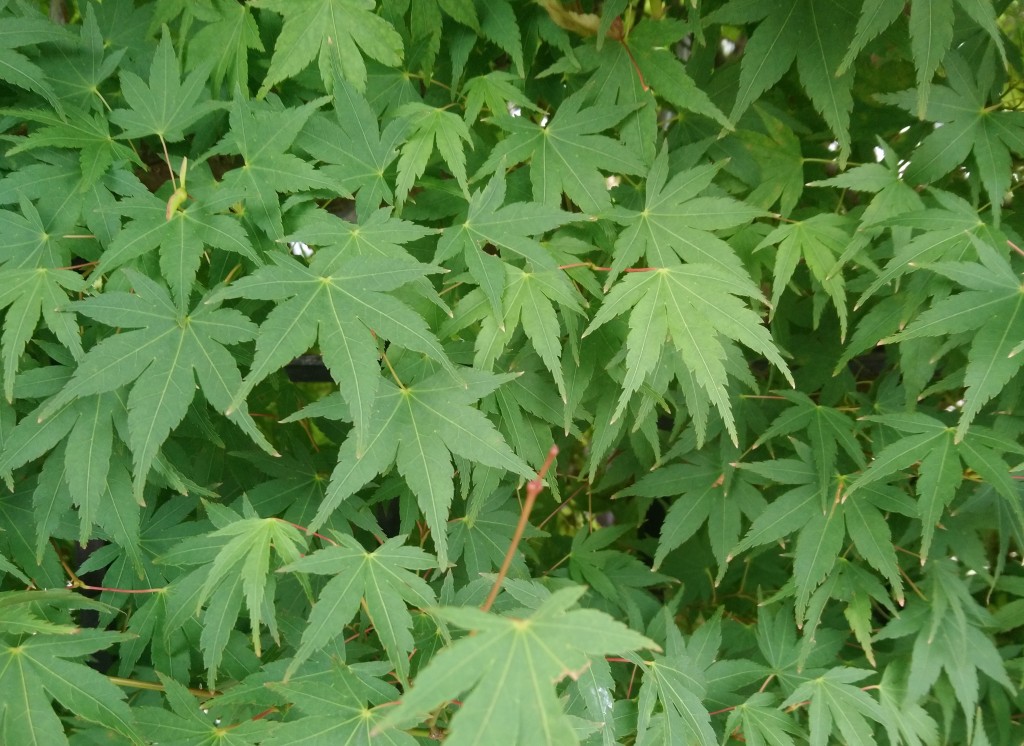
[002] Acer palmatum, Japanese Maple
Introduction
Acer palmatum, the Japanese Maple, is tree native to Japan and the Far East that is widely cultivated in Britain in a number of varieties. It is grown, often as a very small tree or shrub, as an ornamental plant with various forms of attractively shaped and coloured leaves.
It is also known as the Smooth Japanese Maple or Palmate Maple.
Taxonomy
Kingdom – Plants
Division – Vascular Plants
Class – Flowering Plants
Order – Sapindales
Family – Sapindaceae
Genus – Acer (Maple)
Scientific Name – Acer palmatum
Wikipedia lists nearly twenty scientific synonyms, which can be considered obsolete.
It has thousands of named cultivars.
Name
For most of these blogs I will stick to one species but sometimes a genus has two or three very similar species that I will consider together. There are so many common species of Maple in Britain that I have split the genus into two posts. In this blog I will look at Acer palmatum, A griseum and A japonicum. Post [002] Acer pseudoplatanus will look at the Sycamore Maple, Field Maple, Norway Maple and Silver Maple. It will deal with Maple trees in general including the name ‘Maple’ and its Latin ‘Acer.’
The ‘Japanese’ part of today’s species name comes from its original native location and in its scientific name, ‘palmatum’ refers to the palmate (hand-shaped) nature of its leaves.
Description and Cultivation
As we will find with many widely cultivated plants it is hard to give even a general description because selective breeding has produced many different types. It can be considered as a particularly ornamental type of Maple.
Acer palmatum has been cultivated for hundreds of years in Japan and for two hundred years in Britain. The ones you will see in Britain are all cultivated garden varieties.
We have two in our tiny garden. One has red leaves and one has light green leaves. But both are quite similar small trees with small, flat palmate leaves, mostly of five triangular pointed fingers.


I see them frequently in parks and gardens. Generally, they are of the red varieties and are usually short, spreading trees in weeping form.


Here are some small ones planted recently in the centre of Cheltenham, where several young trees are planted in a bed of [048] Wax Begonias. They look almost as if they may be treated as annuals, or even replaced in a couple of months when the flowerbeds are replanted.
I have occasionally seen green varieties looking more like trees and growing to several metres in height.
Other Notes
This is not a good example of a tree but it’s a good example of an ornamental garden plant with many different varieties. The smaller weeping forms are suited to growing in pots or even as bonsai. Even the versions with plain green leaves become particularly attractive in their autumn colours. There are also varieties where the leaves can be purple-pink or have feathered shapes.
See also
A related species, Acer griseum, the Paperbark Maple native to central China, was introduced to Britain about a hundred years ago and is grown as a tree for its attractive colourful bark. I have seen several of these in local parks. Pictures below are from the grounds around Cirencester Abbey.
(The confusingly names Acer japonicum, known as the Amur Maple, Downy Japanese Maple or Fullmoon Maple, is very similar but rarely grown in Britain as an ornamental Tree.)
As noted above, see tomorrow’s post [003] Acer pseudoplatanus for more Maple species.











Pingback: [264] Physocarpus opulifolius, Ninebark | The Species of Britain